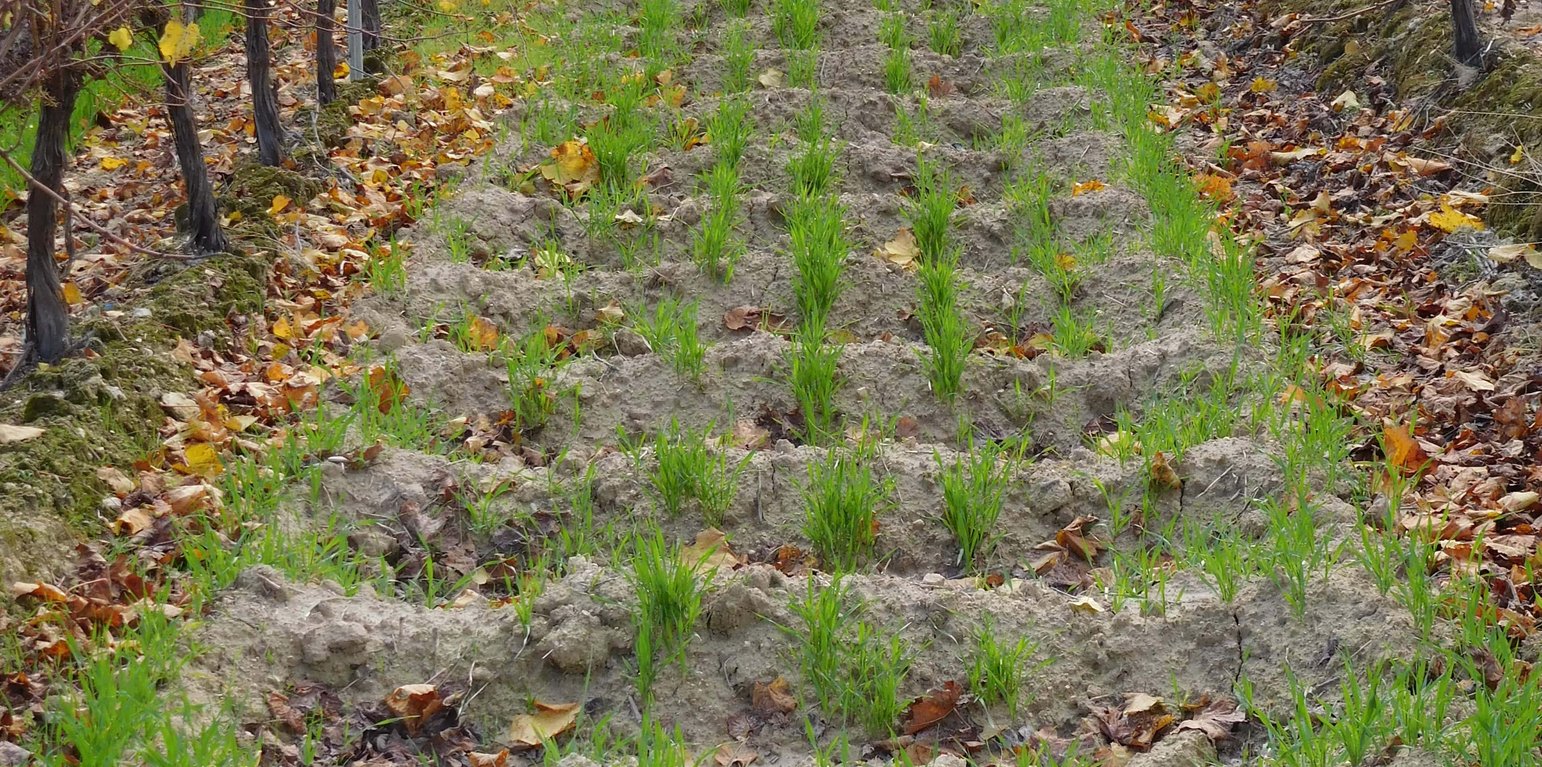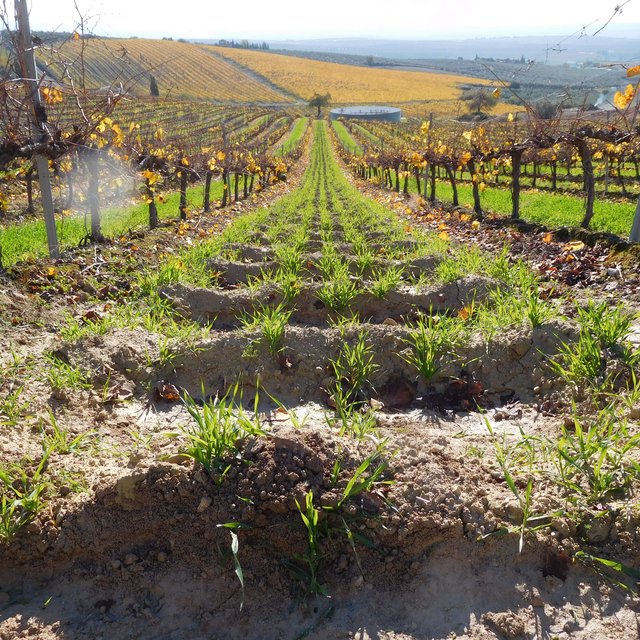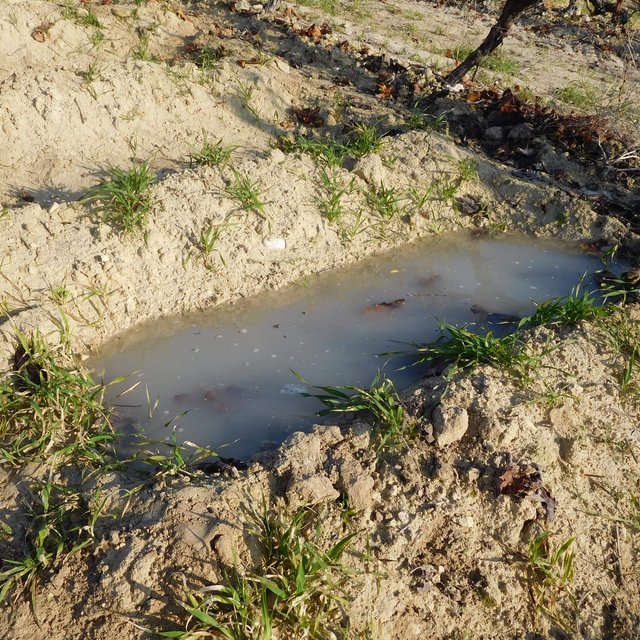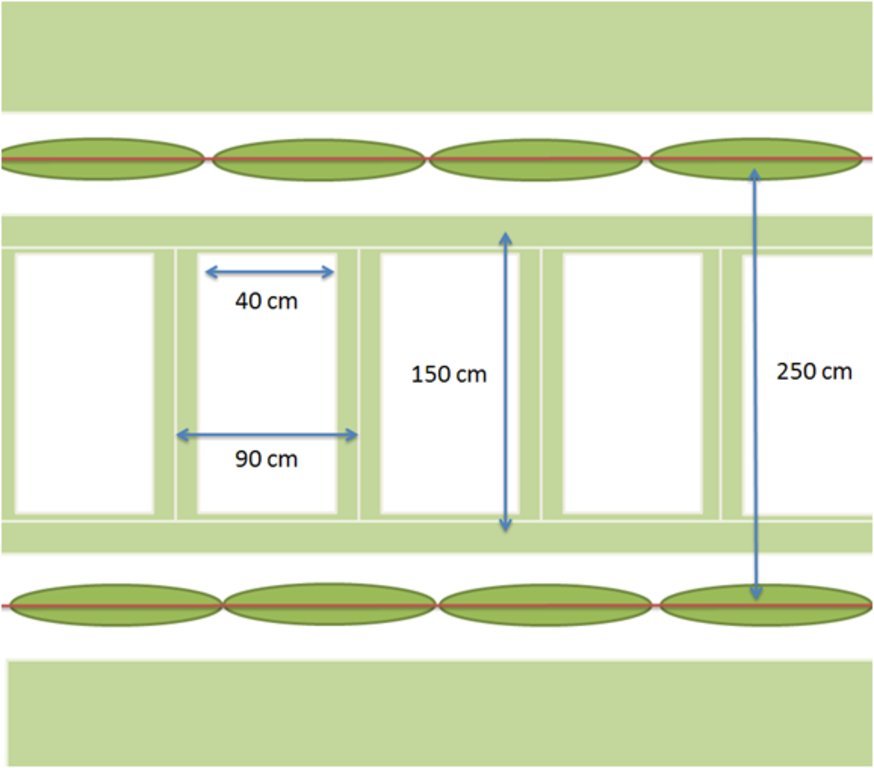



Aserpiado (also known as Alumbrado) is applied in vineyards in Southern Spain in lower and mid altitudes where the climate is characterized by relative high rainfall during winter, but almost none in summer. This requires adoptions in the water management like irrigation or on-site storage of water.
With the aserpiado technique, seasonal soil bunds are made every autumn in order to limit irrigation requirements and to protect the soil against erosion. These contour bunds in the allies remain in place the entire winter to make best use of precipitation that occurs mostly during this period.
The functioning of Aserpias was analysed in a vineyard within the Appellation of Origin Montilla-Moriles in Córdoba, the only previously existing documentation on this measure comes from vineyards in the Jerez wine region. Farmers use Aserpiado because it is the only way to get enough water without irrigation, as when irrigation is applied it cannot get the protected ‘Jerez-Sherry’ label.
The microbasins are made in the inter-row area by dragging a caterpillar tractor pulled (see picture Aserpiadora) hydraulic beam over the field which lifts leaving a heap of soil behind. The speed and interval of the beam are set in such a way that a bund is made every 1.5 meter. Some users sow barely directly in advance of making the aserpiado which results in a high plant cover of the bunds during winter. The main function of Aserpiado is to catch rainwater which otherwise would be lost runoff. With Aserpiado the runoff is close to zero this means more water should become available for the crops.
The required inputs for creating and maintaining aserpias depends upon whether the bunds are permanent or seasonal. If permanent the ridges should be checked regulary and maintained by hand. When the aserpiado is only present during the winter season regular tillage in summer is necessary to keep the soil workable so the 'aserpiadora' (specialized tillage tool) can create the aserpias in autumn which are removed in spring to ease field traffic. With a modern-day Aserpiadora a farmer can create 3 to 5 ha of aserpias a day (Narvaez, 1980). The impacts of establishing aserpias are less soil erosion, less runoff and more water storage in the soil. Land users like Aserpiado as it is a very effective way to increase soil moisture and reduce soil erosion, when used in combination with cover crops the soil quality also improves over time.

Localização: Finca Cañada Navarro, Montilla, Andalucia, Cordoba Province, Espanha
Nº de sites de tecnologia analisados: Local único
Difusão da tecnologia: Aplicado em pontos específicos/concentrado numa pequena área
Em uma área permanentemente protegida?:
Data da implementação: menos de 10 anos atrás (recentemente)
Tipo de introdução






| Especifique a entrada | Unidade | Quantidade | Custos por unidade (Euros) | Custos totais por entrada (Euros) | % dos custos arcados pelos usuários da terra |
| Mão-de-obra | |||||
| Tractor driver | h/ha | 5,5 | 40,0 | 220,0 | 96,0 |
| Equipamento | |||||
| Scarifier | h/ha | 1,5 | 40,0 | 60,0 | 100,0 |
| Seeder | h/ha | 2,25 | 40,0 | 90,0 | 100,0 |
| Aserpiadora | h/ha | 1,5 | 40,0 | 60,0 | 100,0 |
| Cultivator | h/ha | 1,5 | 40,0 | 60,0 | 100,0 |
| Material vegetal | |||||
| Barley seed | kg/ha | 80,0 | 0,2 | 16,0 | |
| Fertilizantes e biocidas | |||||
| Herbicide** | l/ha | 3,0 | 6,67 | 20,01 | |
| Custos totais para a manutenção da tecnologia | 526.01 | ||||
| Custos totais de manutenção da Tecnologia em USD | 559.59 | ||||
Water balance modelling on aserpiado fields indicate a high percolation rate